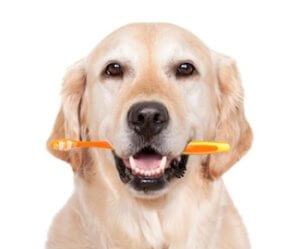The people at College Village Animal Clinic really care about Bearded Dragons. Our dragon, Ajax, is grateful.Read full story: Tim Pearson
Dentistry and Endodontics
 We believe preventative care is the best approach for long term oral health. We recommend performing routine dental cleanings on your pet yearly. Our hospital is well equipped to provide dental care services to include dental prophylaxis or cleaning and polishing, tooth extractions, digital dental radiography, oral surgery and root canals. A dental cleaning includes an oral examination, ultrasonic scaling of the teeth, polishing of the teeth, full-mouth radiographs, and full mouth charting.
We believe preventative care is the best approach for long term oral health. We recommend performing routine dental cleanings on your pet yearly. Our hospital is well equipped to provide dental care services to include dental prophylaxis or cleaning and polishing, tooth extractions, digital dental radiography, oral surgery and root canals. A dental cleaning includes an oral examination, ultrasonic scaling of the teeth, polishing of the teeth, full-mouth radiographs, and full mouth charting.
Dental radiographs (x-rays) are an essential tool used in the dental diagnostic work up. Dental x-rays are used to evaluate possible disease conditions that exist under the gum line that are not visible to the naked eye. We utilize digital dental x-rays which allow us to take multiple x-rays of your pet’s mouth during a short duration keeping the patients anesthetic procedure shorter.
Fractured teeth are a very common occurrence in dogs and cats, resulting from external trauma or chewing on hard objects. The teeth most frequently broken are the canine (fang) teeth in the dog and the cat, and the upper fourth premolar teeth (the carnassial teeth – the large upper teeth in the back of the mouth) in dogs.
Anyone who has experienced endodontic pain in their own mouth can verify that this can be very painful. Unfortunately, our animal patients rarely show obvious signs of discomfort; choosing instead to hide their pain. The absence of obvious signs of pain encourages owners to be unaware of or ignore the problem, since “it doesn’t seem to bother the pet”. We now know that these animals are affected locally as well as systemically, and that ignoring the problem is not a good option. Many clients who felt confident that their pet was not bothered by a broken tooth relate that their pet acted “years younger” shortly after the endodontic problem had been correctly treated.
Although most fractured/infected teeth are not associated with swelling or drainage, sometimes the infection seeping out of the root tips will cause swelling or drainage through the skin or into the mouth. This most commonly occurs with a fracture of the large upper fourth premolar in dogs, which drains through the skin of the face below the eye. In cats, a draining tract may occasionally be seen below the eye. Although antibiotic treatment may temporally resolve the clinical signs, invariably the problem will reoccur if the offending tooth is not effectively treated.
The “endodontic system” is the hollow area inside a tooth that is filled with sensitive pulp tissue (blood vessels, nerves, and connective tissue), which allows the teeth to grow, mature and respond to stress. The blood supply and nerves enter the teeth through a collection of small holes in the tips of the roots (‘apical delta’) in dogs and cats.
Endodontic therapy deals with the diagnosis and treatment of diseases of the pulp of a tooth. When this occurs there are two options available. The first is to extract the tooth which solves the problem and is less expensive but does result in the loss of the tooth. The second is root canal therapy (which saves the tooth). Root canal therapy can be done on our pets just like in humans. Root canal therapy is performed when a tooth has died. There are several reasons why a tooth may die, but the most common cause is a fracture of the tooth. If the crown of the tooth fractures and the pulp tissue is exposed, the tooth dies. The infected root canal contents then “leak” infection into the bone around the tips of the root. This can lead to an infection forming in the bone. With a root canal procedure the dead and infected root canal contents are removed and the root canal is refilled with a material that will seal off the inside. This prevents the bone infection around the tips of the roots. Root canal therapy is successful >90%.
 College Village Animal Clinic
College Village Animal Clinic